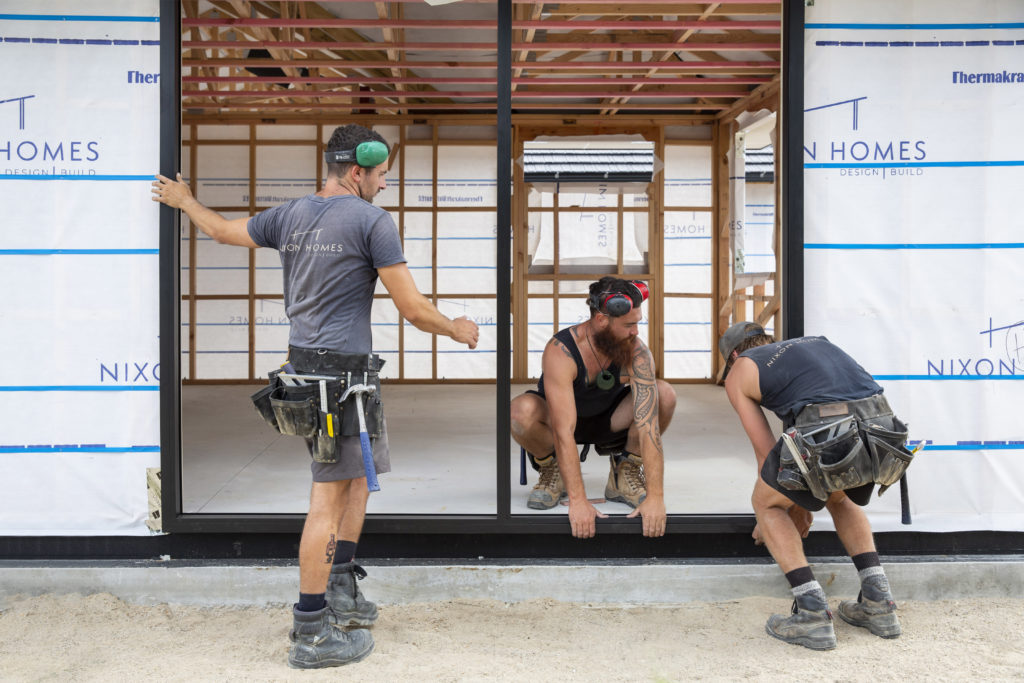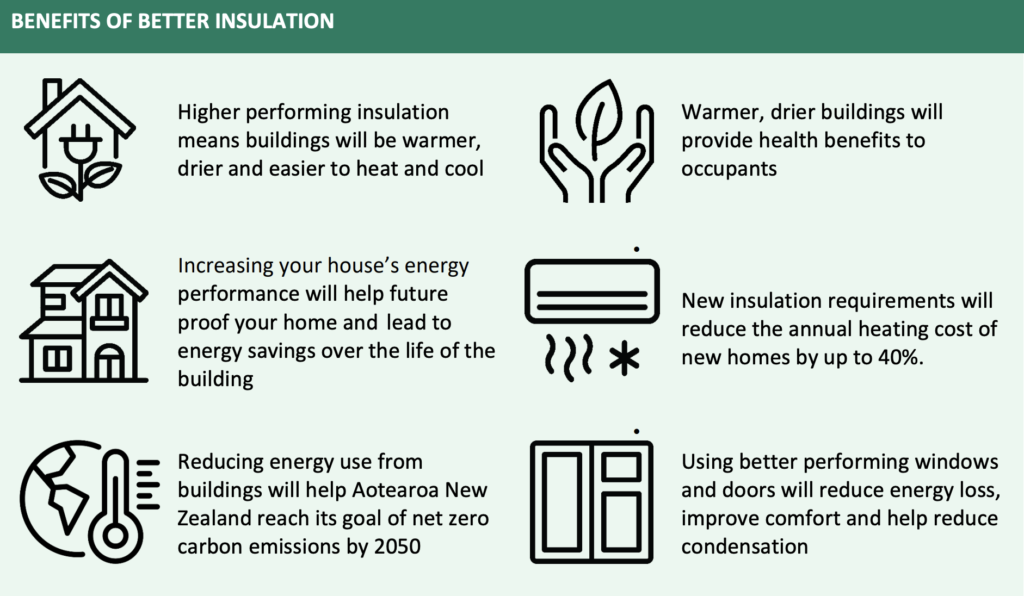
Following over 3000 responses to the building code consultation in 2021 The Ministry of Business, Innovation and Employment (MBIE) are making changes to the building code in an attempt to build warmer, drier and healthier homes. Reducing the amount of energy used to heat up homes by 40%.
The changes are broken down into four subsections; Energy efficiency, Natural light, External Moisture and Structure. With the biggest changes being to ceiling and window insulation.
The changes were scheduled to come into effect as of the 3rd of November 2022 however after a consultation earlier this year a 6 month extension has been granted meaning from 1 May 2023 new building work in homes must meet the new wall, floor, and roof insulation performance requirements.
This delay comes after some industry groups told the government that more time was required to prepare for the change. As the requirement for thermally isolated windows and slab insulation will change the way we build hence industry experts are currently taking time to find adequate solutions.
It is important to note that window insulation requirements have not been delayed and Low-E glass will be required in new builds from the 1st of November.

What’s changed?
- New R-value requirements known as the thermal resistance rating. Residential Housing will require R6.6 roofs and R0.46+ windows, R2.0 walls and R1.5+ slab on-grade floors.
- There will now be 6 climate zones, each with its own building requirements. We build in zone 2.
- Foundation insulation has increased
- Concrete slabs will need thermal insulation around the perimeter to achievethe new requirements of R1.5
- Increased insulation for timber floors
- Window Insulation has increased
- 2 step process (for zones 1 and 2)
- Step one – R value of 0.37 required by 2nd November 2022
- Step two – R value of 0.46 required by 2nd November 2023
- To achieve
- Step 1 – Low E glass with argon
- Step 2 – thermally broken windows
- 2 step process (for zones 1 and 2)
- Designers can now use computer modelling software to design buildings to ensuresufficient natural light is provided in complex buildings.
- New testing for cladding systems.
What does this mean for your build?
 The new insulation requirements will see demand for insulation almost double. With better thermally performing insulation and window products being the most highly sought after.
The new insulation requirements will see demand for insulation almost double. With better thermally performing insulation and window products being the most highly sought after.
This will see an increase in cost for a new build in the short term, as more materials are now required. We expect to see insulation costs increase by 30% and windows increase by 10-12% this year due to requiring Low E. However, the government has advised that they expect to see a long term decrease in power bills and an increase in the health and wellbeing of the residents as a result of these changes.
Nixon Homes is currently working on ensuring all our suppliers and builders understand the new changes to ensure your home meets the new requirements. Providing a safer environment for you and your whānau.


